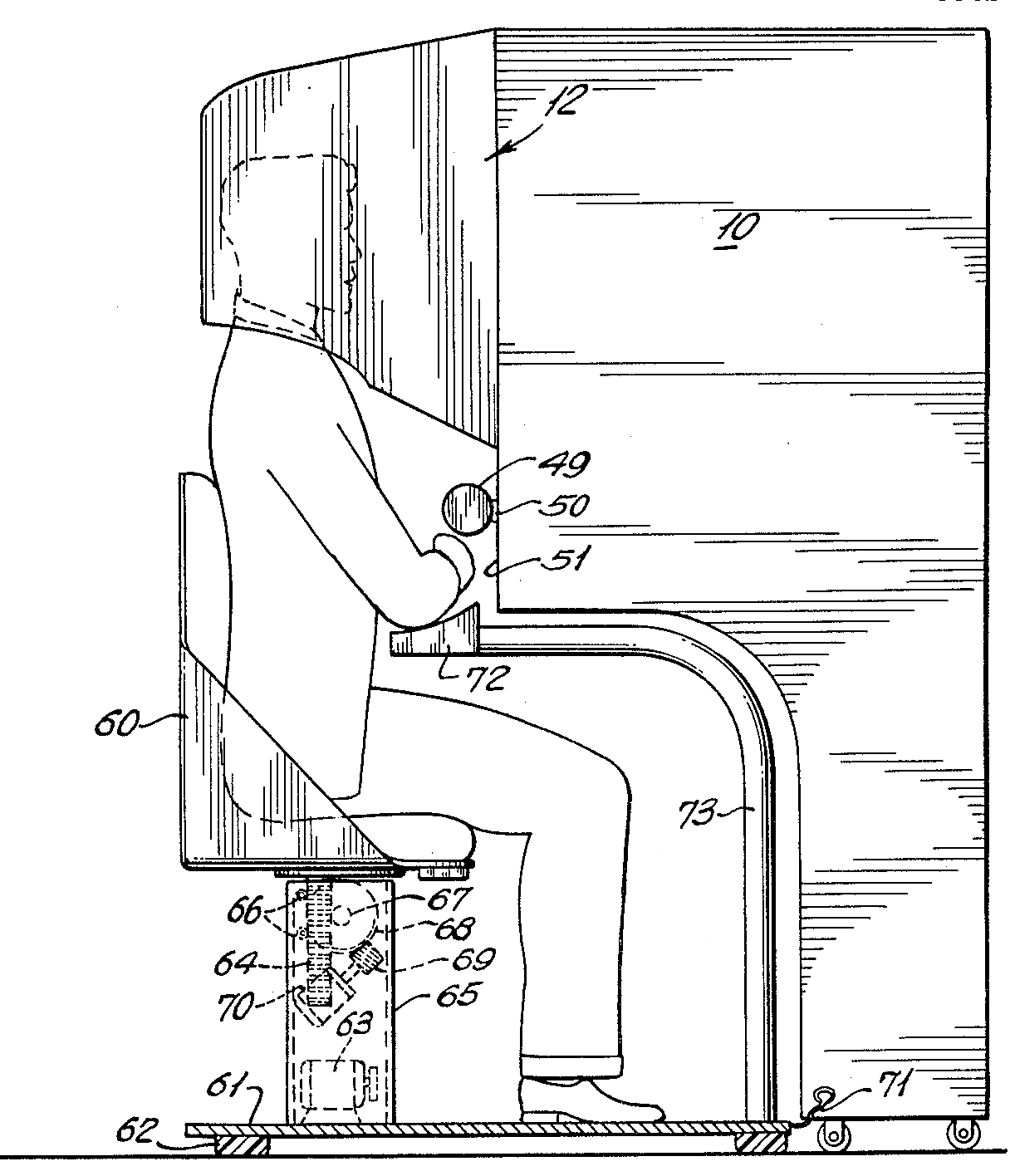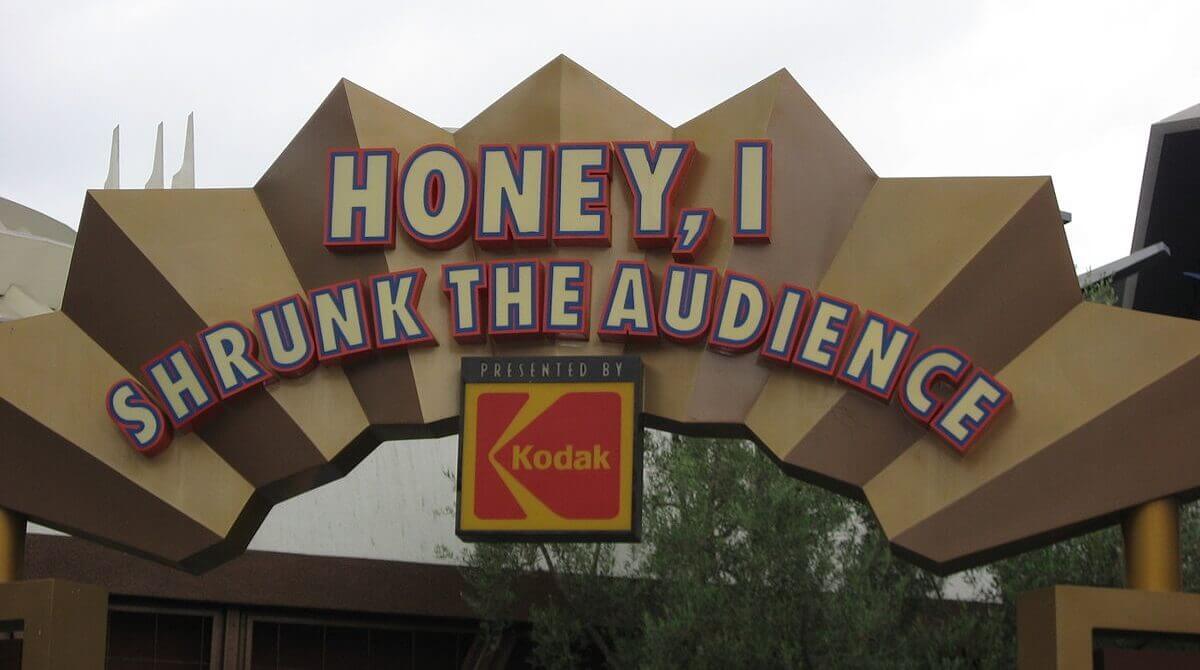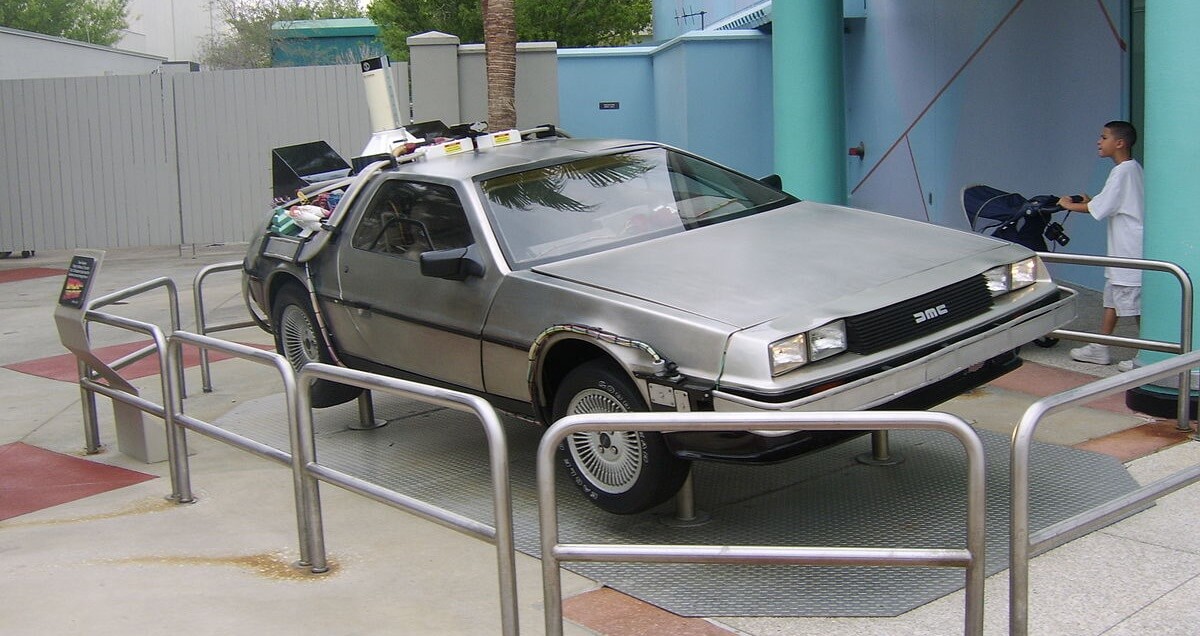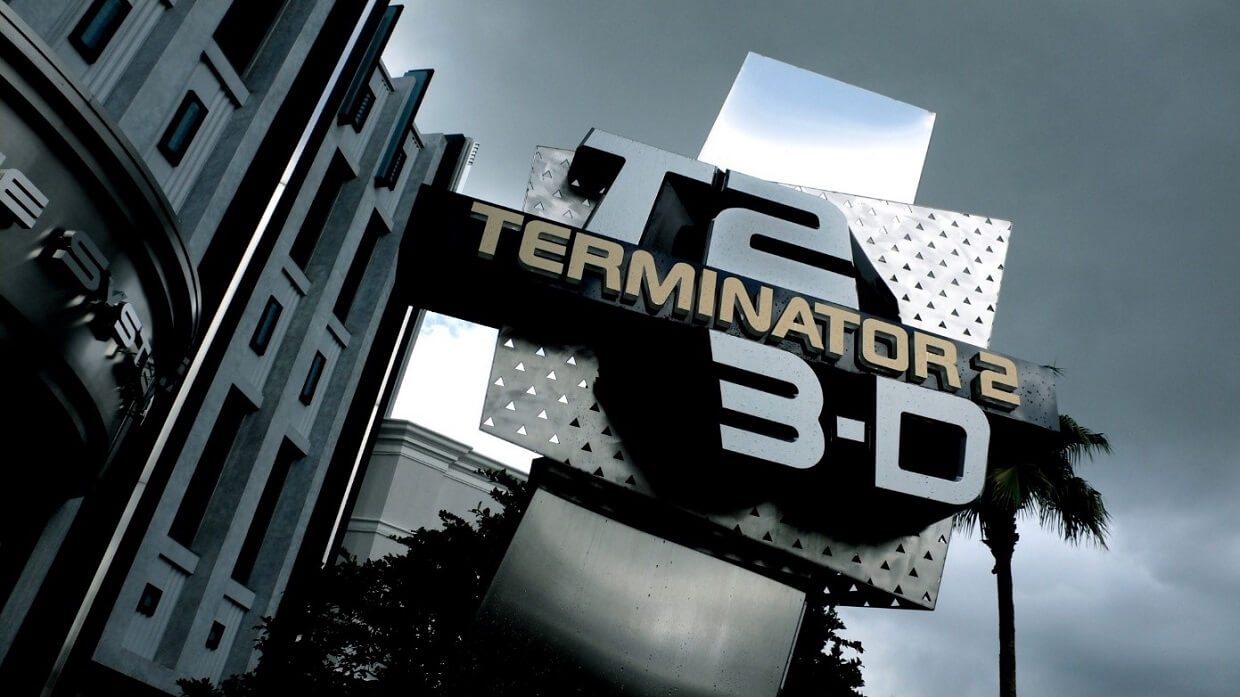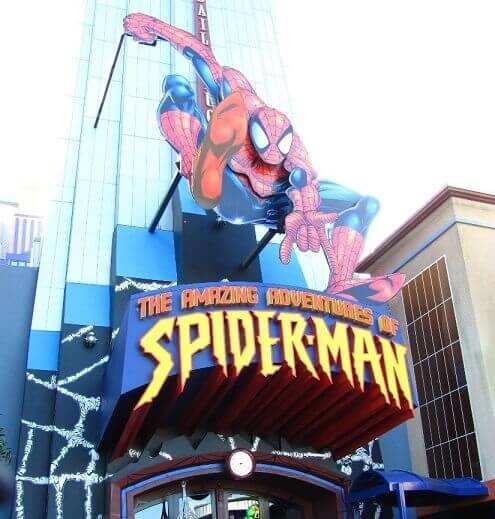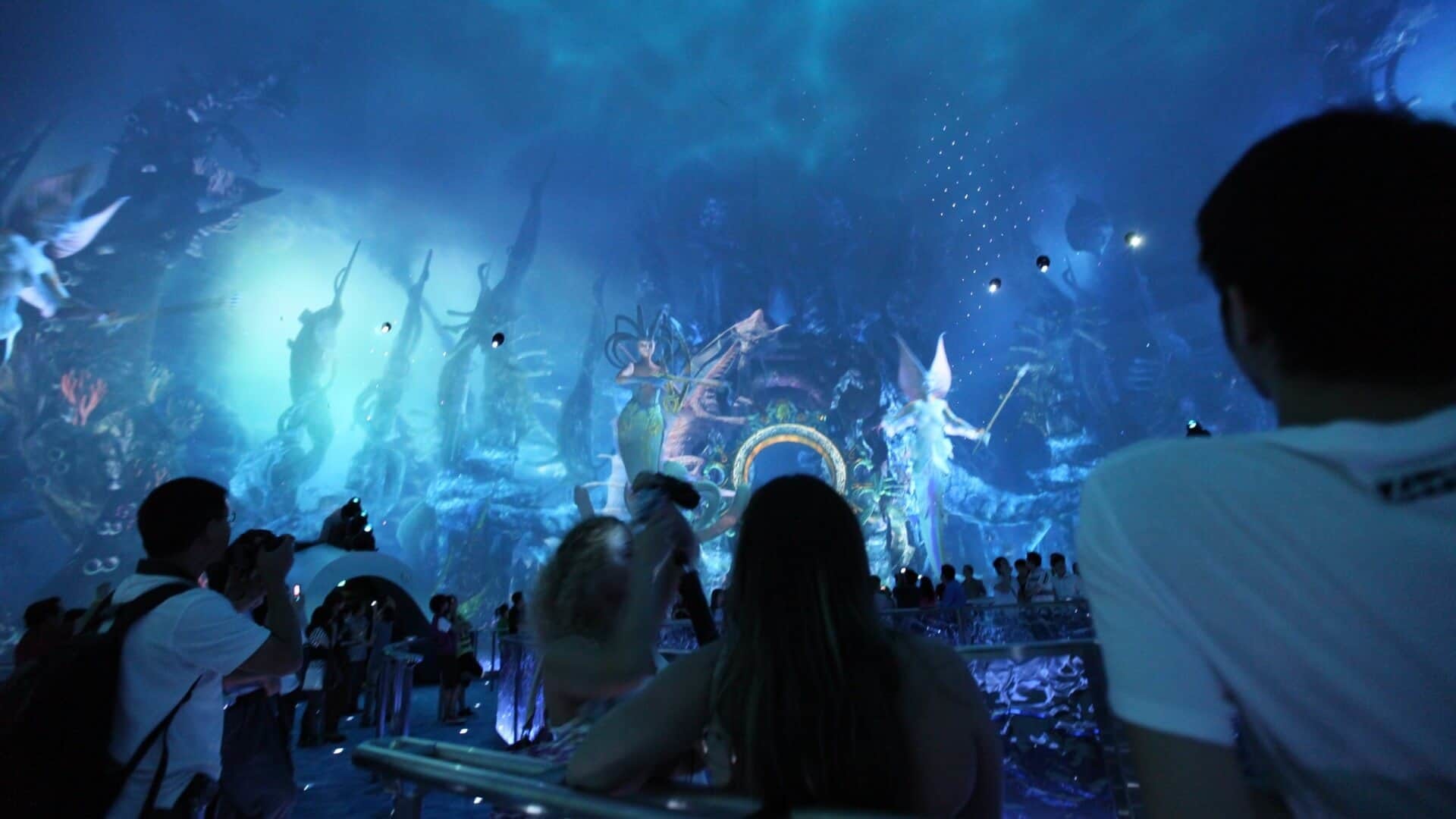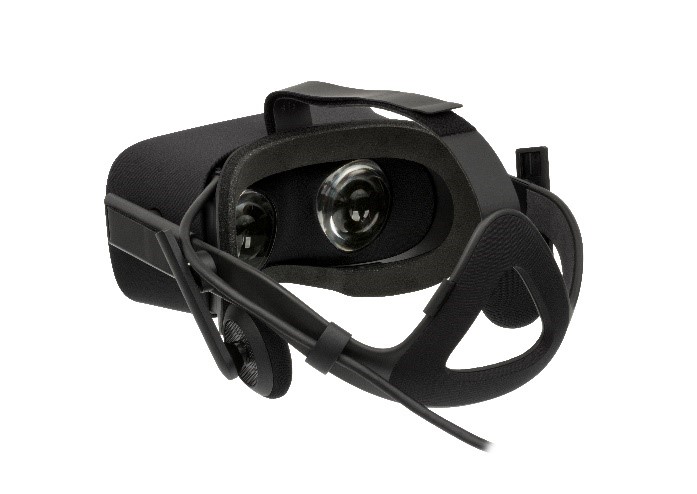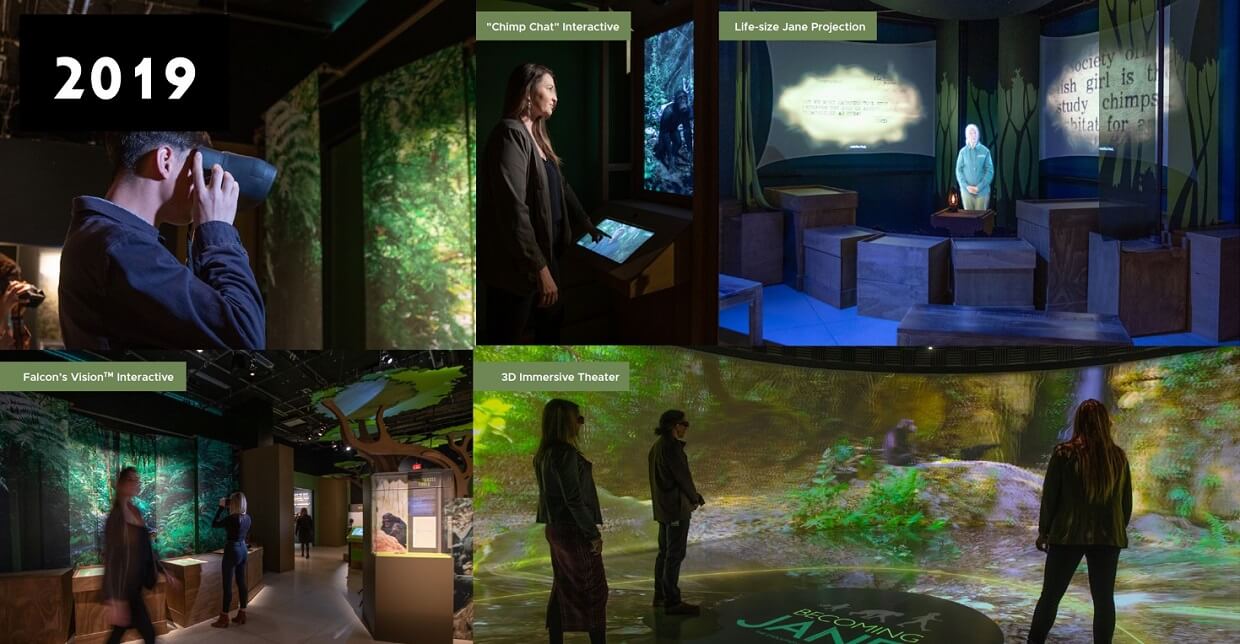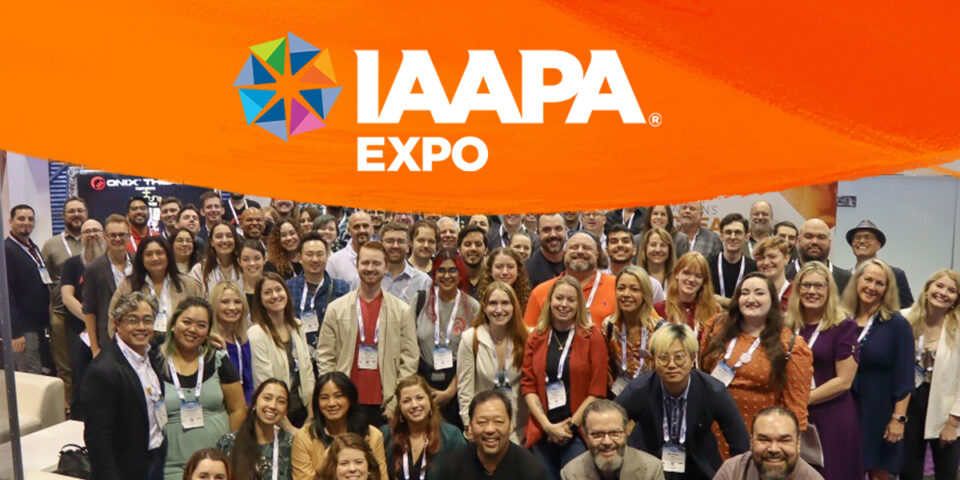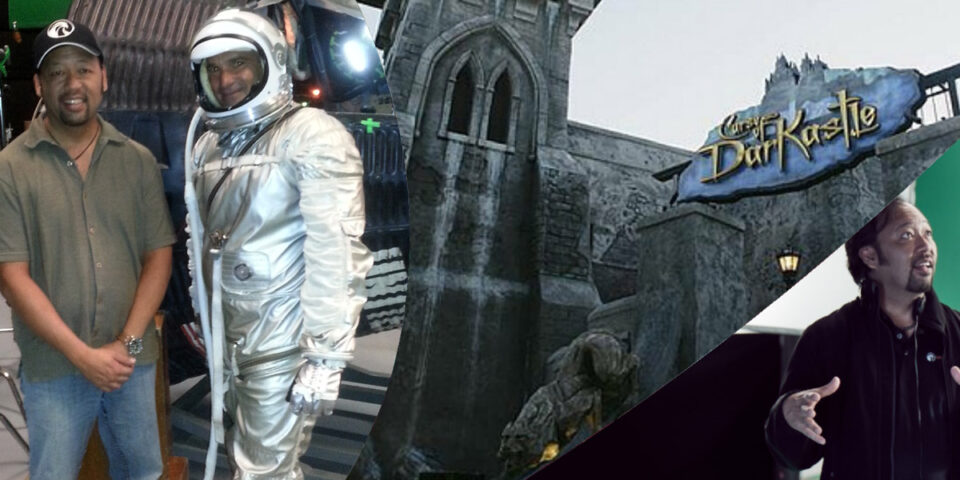Theme parks have traditionally been built by storytellers who collaborate with designers and engineers to create environments and experiences that push the boundaries of innovation and technology, making the impossible possible.
At the core, it’s about crafting a compelling story and engaging the audience’s imagination in such a way that, in any moment, they completely believe what they are seeing and hearing. A term often used in our industry that defines this is “immersive.”
Morton Heilig’s Sensorama Device
Technology has been used as a tool to suspend the audience’s disbelief. The careful balance of leveraging technologies with physical or “practical” effects is one of the biggest challenges when designing these experiences.
Tricking a person into believing that something is happening to them in the physical world is a hard thing to achieve, but when done right, it can truly elevate their experience.
As early as the 1950s, devices such as the “Sensorama” were developed as a form of personal entertainment that incorporated effects such as stereoscopic imagery, smell, wind, and vibration.
The device itself was probably a bit ahead of its time, as it never widely caught on. However, it helped the industry imagine the possibilities when leveraging multiple types of technologies that could cause the viewer/rider to suspend their disbelief.
Hype
Since the 1950s, there has been a push to incorporate physical effects into marketing phrases, such as 3D and 4D. 3D is simply stereoscopic imagery. 4D is accomplished by adding sensory elements such as fog, spritz, or motion. Oftentimes, the movement is synchronized with 3D imagery.
As the years progressed, each new gag added a level of dimensionality that could be marketed to attract riders, resulting in 5D, 6D, and 7D attractions. As the industry has matured, adding virtual reality (VR) and interactivity in real-time, we have seen new monikers become popular.
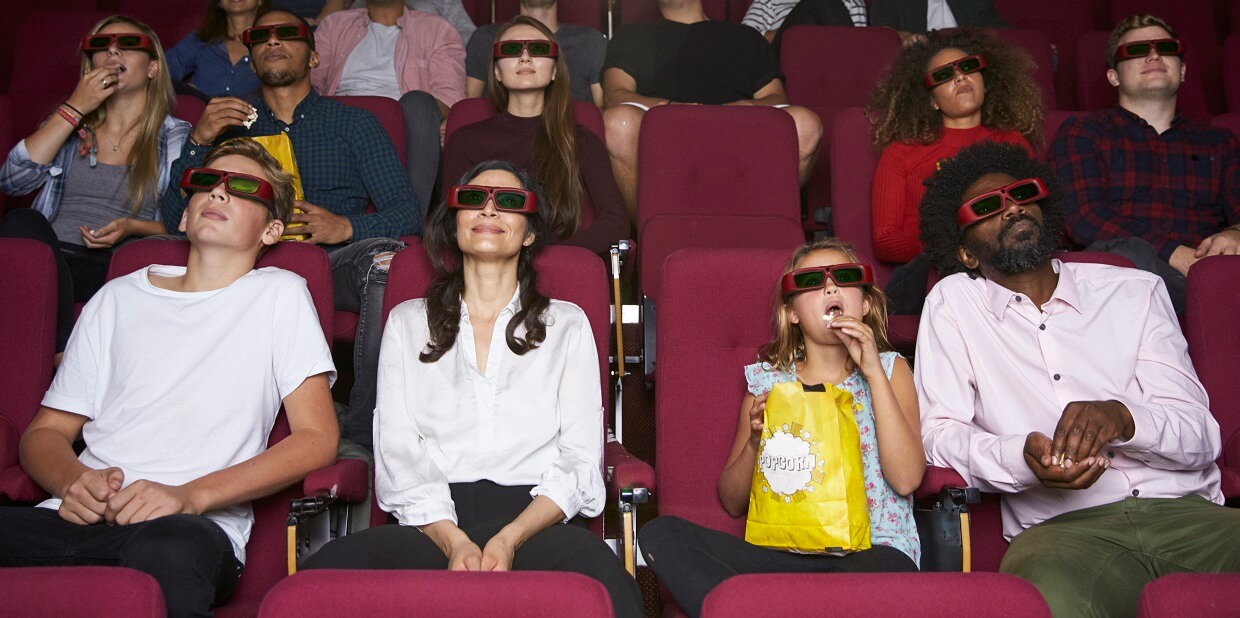
How Many Dimensions Can We Handle? When Is It Too Many?
Well, we first need to accept how we experience the natural world, which begins by understanding the five Aristotelian senses that we rely on every day:
- Somatosensory (touch)
- Olfactory (smell)
- Sight (vision)
- Auditory (hearing)
- Gustatory (taste))
Our bodies utilize these five senses to interpret what we experience in our reality so that our brains can make sense
of the physical world. Without these senses, life might be
boring.
There are even more sensory modalities that exist that allow us to detect other stimuli beyond the traditional five senses.
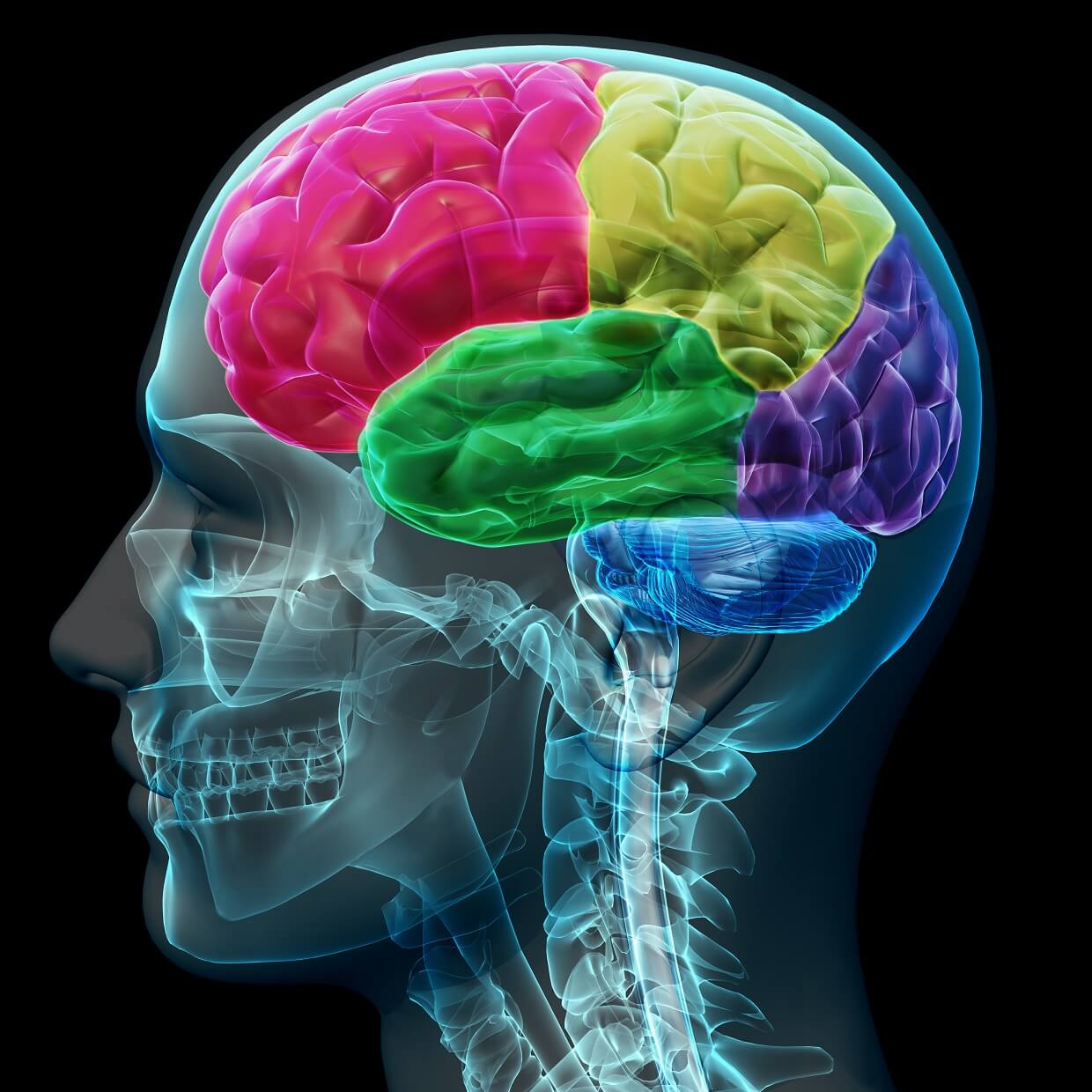
This traditional list gets meta, so we’re just going to delve into the two most relevant ones that have been adopted as “the basic senses" are Vestibular (balance) and Proprioception (body awareness)
This leads to some very interesting use cases where you can alter a person’s perception of physical space by manipulating the visual imagery to be that of a completely different reality, i.e. make a person walk around walls in VR when there are no walls in the physical space.
Sharing Experiences
While the sensory experience is important, humans crave interaction with others. We crave stimulation, whether organically from another person or through a video game. We also crave community, which is evident in our history of gatherings, whether crowding around a fire pit, enjoying a concert, riding a rollercoaster, or playing an online multiplayer game.
The fact is, most people enjoy sharing experiences in the company of others. For any experience to really resonate with an individual, there needs to be a social component that allows the user to share the experience with others. When this is accomplished, there is even more of an opportunity to further immerse the rider/viewer in the story.
One of the world’s first examples of a 4D, large-scale, shared, immersive experience is Captain EO. Produced by heavy-hitters Francis Ford Coppola, George Lucas, and Michael Jackson, it is still, to this day, one of the most expensive films ever produced (adjusting for inflation) on a per minute basis at over $1.5 million a minute, with a total of $30 million spent on the entire experience. The show’s famous stereoscopic short film was synced with effects such as wind, fog, and scent.
The theme park attraction was a huge success for Disney in the 1980s and ‘90s. It was replaced by another 4D film, Honey, I Shrunk the Audience, which was an evolution to everything that was learned on Captain EO.
Larger Formats
Another giant feat in the themed entertainment sector was the integration of large format media synchronized to a motion base. A standout example of this was The Back to the Future ride, which opened on May 2, 1991 in Orlando, FL. The motion simulator ride utilized an impressive array of technologies.
Known as the OMNIMAX Dome, it consisted of a hemispherical surface onto which 70mm film was projected via a fisheye lens. Eight riders per vehicle were arranged in two rows, and vehicles were staggered so riders couldn’t see the other vehicles. The ride vehicles themselves would rise eight feet from their “garage” to provide a true sense of flight.
The motion base also allowed for nearly two feet of motion in any direction. Wind, water, and smoke were strategically utilized as well. This incredible experience allowed 192 guests to experience the ride simultaneously, feeling as if they were part of the voyage yet oblivious to the other ride vehicles and passengers that took the journey with them.
He’s Back.
In 1996, Universal Studios Florida opened one of the most technically complex ride films to date, T2:3D Battle Across Time. This incredibly ambitious project was a skillful mashup of choreographed live action stunt performances, a stereoscopic film, and animatronics synchronized with water FX, atmospherics, and pyrotechnics.
The concept - taking the audience from the stage, into the film, and back to the stage, and then synchronizing actors in the room with a computer-generated (CG) stereoscopic bad guy - was a first.
In one of the biggest wow moments, the Terminator rode his motorcycle right into the screen and then showed up in the film! Six projectors ran 70mm film at 30 frames per second on a total of three screens. This ride film also featured Universal’s patented “seat drop” gag at the very end to provide one last surprise for the audience. Cecil Magpuri was involved in the theater design of this experience.
My Spidey Senses Are Tingling!
In 1999, Universal's Islands of Adventure pushed the boundary of possibilities by opening the world’s first dark ride system that synchronized the rider’s point of view with stereoscopic CG media.
Techniques and software that had never existed before had to be written in order to create an impressive optical illusion that brought a whole new level of immersion to media-based attractions.
Boasting elaborate physical sets, practical and tactile effects, and a total of thirteen 30-foot tall screens (12 of which were used for 3D projection).
The Amazing Adventures of Spider-Man quickly became one of the most popular rides in the world.
In 2012, because of its incredible success, Universal further enhanced the ride by updating the media to HD and all the film projectors to digital.
Enter the Dome
Falcon's Creative Group has been creating media for 360° formats since 2003 and has been pioneering the art of storytelling in dome theaters since its installation of Dragon’s Treasure™ at the City of Dreams Casino in Macau in 2009.
Here, we created the world’s largest dome experience, which housed up to 500 people at one time. Guests were immersed in a media rich environment that also featured water and lighting effects. What made it even more special was the shared experience.
The New Reality
In 2012, the world saw a culmination, an alignment in several industries, that helped usher in “new” technology, VR/AR/XR. I use “new” lightly, as the technology has been around in its crudest form since the 1956 Sensorama.
Processing power and display technologies finally reached a critical mass where we could now present high-fidelity VR experiences to users.
Falcons recognized the importance of this technological breakthrough, enough to be one of the early Kickstarter backers of the Oculus DK1 HMD.
We started using VR at Falcon’s to develop experiences when we worked on 2012’s Turtle Trek® for SeaWorld Orlando. This project represented yet another industry advancement pioneered by Falcon’s Creative Group: the world’s first 360° 3D omni-view attraction, which was presented on our Spheron® Dome Theater. The impact the media has on guests in this setting is unequaled.
The problem we now face is seemingly a regression in how we experience. While the technology itself is very capable of transporting us to another world, we are completely isolated from other users and the environment around us. The social aspect of an experience is a very powerful one; we all want to talk about what we just witnessed. Furthermore, the logistics and sanitation requirements for attractions that have high throughput will severely affect the overall THRC.
AR and MR implementations wouldn’t necessarily suffer from ALL the same problems, but they pose their own set of issues when trying to achieve an immersive, multi-user experience en masse.
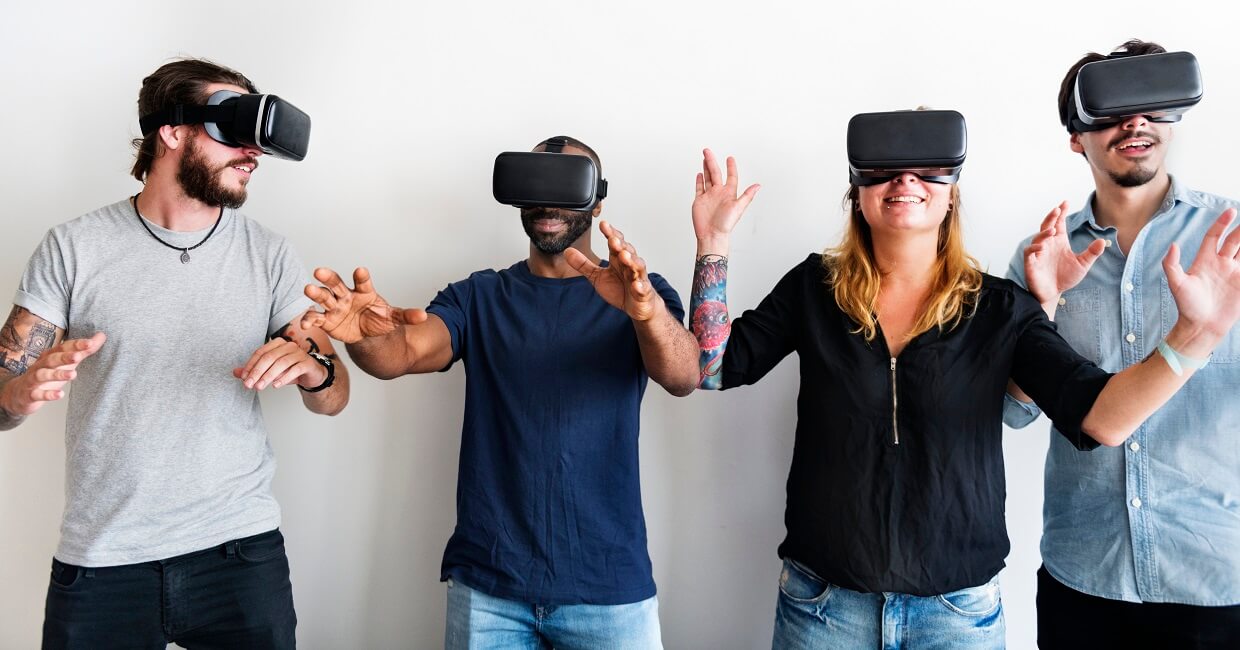
With the hype of VR taking over theme parks, we began to see VR coasters, but as cool as the imagery was, the consensus was the same. Operators saw a decrease in throughput due to the logistics, and the riders would sometimes get motion sickness or suffer a poor experience due to the less than ideal fit of the HMD. Operators grew frustrated with the amount of time it would take, not to mention the added hygiene issues. The initial implementations seemed to be first to market risks rather than creating a meaningful experience leveraging the technology in an impactful way.
Falcon’s went from using VR products to develop and test experiences in-house to designing cutting edge VR guest experiences for people all over the world. The story actually begins in the 1990s when Cecil Magpuri, President and Chief Creative Officer of Falcon’s, first conceptualized CircuMotion® Theater.
He was thinking about ways to combine storytelling and the technology of a motion base with three degrees of freedom inside a full dome. The motion would be choreographed and synchronized with action-packed, stereoscopic 3D media. Fast forward to 2016 and the premiere of Hulk: Epsilon Base 3D at IMG Worlds of Adventure. This is when the true intent of CircuMotion® was brought to life. The ride provides a VR 3D synchronized motion experience without the need for a head-mounted display.
Cracking the Code
It is in Falcon's DNA to leverage existing technologies or create brand new ones to aid the storytelling experience. We often find ourselves taking consumer-facing technologies and retooling them to aid our creation of meaningful and compelling experiences. This was evident in National Geographic Encounter: Ocean Odyssey, a permanent installation in Times Square. We leveraged technologies found in the burgeoning VR industry and combined them with existing yet advanced projection technologies to provide a virtual, interactive aquarium experience.
Ocean Odyssey is a brilliant example of how several display and interactive technologies can be seamlessly combined to deliver an engaging and immersive experience.
In 2018, Falcon's embarked on a project that would be a world’s first in several aspects, including being the first high-capacity VR 360° action ride. In Battle for Eire at Busch Gardens Williamsburg we incorporated VR HMDs, a motion base that accommodated 59 riders at a time, a full 360° 3D media experience, and interactive elements. We took all the lessons we learned from our 360° storytelling experiences to create this unique dome format media piece to deliver a sensory experience unlike any other to the masses.
Maintaining a high throughput of riders who must wear an HMD is a problem the industry hadn’t figured out yet. Falcon’s accepted the challenge for this groundbreaking attraction. In association with CAVU Designworks and DreamCraft Attractions, our team helped develop a “de-coupled” solution for the HMD itself, providing the head-mounted component to the rider prior to boarding, thereby minimizing the amount of time for fitment once on board, while also solving the hygiene issue.
Falcon's took the extra step of incorporating the purpose of the head piece into the story arc. This “enchanted lens” allows users to see into the mystical world they’re about to enter. At the end of their journey, riders simply leave the HMD on the ride vehicle and toss their “enchanted lens” into a bin, to be washed for the next batch of visitors.
When Falcon’s showcases a real-life figure or the natural or historical world, we seek ways to emotionally connect audiences to the material, drawing them deeper into the experience and engaging their minds while firing their imagination. Perhaps this has never been more evident than with Becoming Jane, an exhibition produced by the National Geographic Museum with support from the Jane Goodall Institute. Falcon’s was hired to create six multimedia experiences that brought the global icon’s remarkable story to life while putting visitors in Jane Goodall’s shoes.
The marquee piece of Becoming Jane is the stunning Gombe 3D 10K theater experience. The film we made for this theater seamlessly incorporates photo-realistic computer animation with 3D virtual reality camera footage of Gombe Stream National Park that was shot specifically for this exhibition. The floor and walls serve as additional projection surfaces that are all brought together with 7.1 surround sound. A completely absorbing experience like this would not be possible without the improvements in VR cameras, projectors, computer hardware, and even software applications.
Falcon's also debuted our Falcon’s Vision™ AR product at Becoming Jane. By using this tested and proven AR platform, users can trigger and watch animated scenes of virtual chimps without being cut off physically from their real surroundings.
What’s Next?
Guests are starting to expect more out of their trips to theme parks, museums, zoos, and other entertainment venues. That’s one reason why real-time interaction and other forms of interactivity within an experience are becoming more and more prevalent. Not to be too dramatic, but the market is indeed exploding. I, for one, have always been very excited to see what emerges from not only our industry but other ones too, so I can begin to ideate how best to integrate them into our future experiences.
The boom of interactive and real-time technologies is going to allow for a level of audience engagement that has never been possible. Now, people can have unique experiences every time they interact, and that experience can transcend beyond its physical location, following them home or somewhere else where engagement can continue. This will dramatically change the landscape of what we all expect from location-based experiences. Imagine a ride that is different every time you experience it; being able to see something from a different vantage point than you hadn’t seen before; having customized avatars unique to your style, giving you agency in your experience.
What is most interesting is how sometimes vertical industry technologies leapfrog other technologies yet are still dependent on one another; an example being computing power on GPU and higher and higher display resolutions and refresh rates. A couple years ago, you could run your favorite game at 120+ fps with the newest graphics cards, but now with VR, 4K, high frame rate (HFR), HDR, etc., GPUs are struggling once again to keep up. New techniques and hardware must be employed to achieve the performance required.
Display technologies such as holograms are getting closer and closer to large scale distribution, and the computing requirements to make it work are starting to gain parity. Real-time graphics will soon become the standard for ride films, which will allow for ride repeatability with different outcomes every time! Visitors will want to keep coming back to see new content. The possibilities are endless, and that’s a good thing.
Whether it’s haptics, displays, projectors, real-time, HFR, or tracking, we are very excited and can probably speak for a lot of people in this space by saying, “bring it on, let’s play.”
About the Author

Saham Ali
Director Of Technology
As director of technology, Saham harnesses his tremendous fountain of knowledge to strengthen many avenues within Falcon’s.

